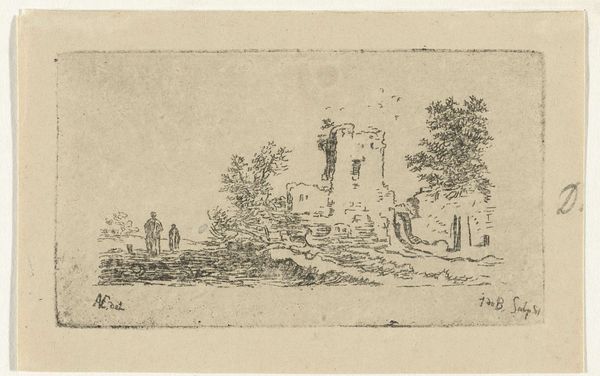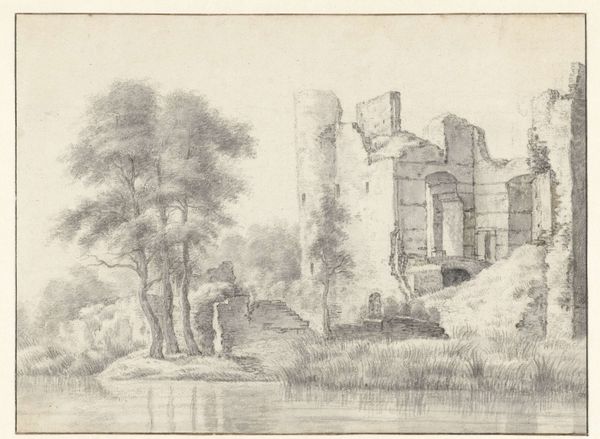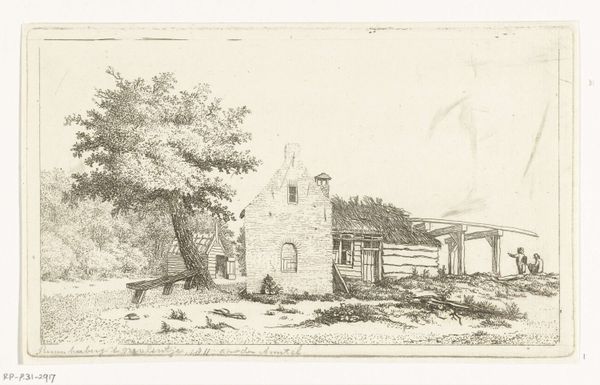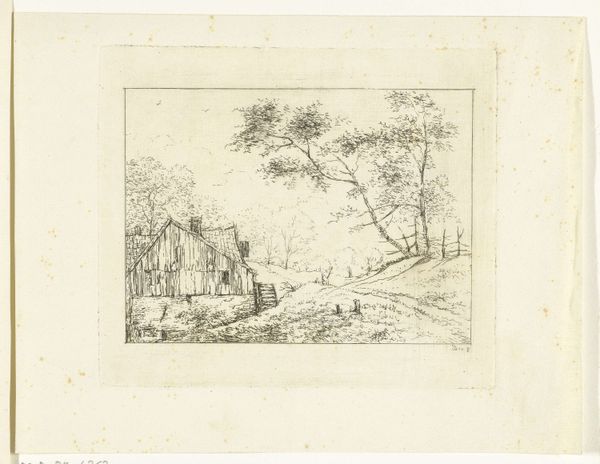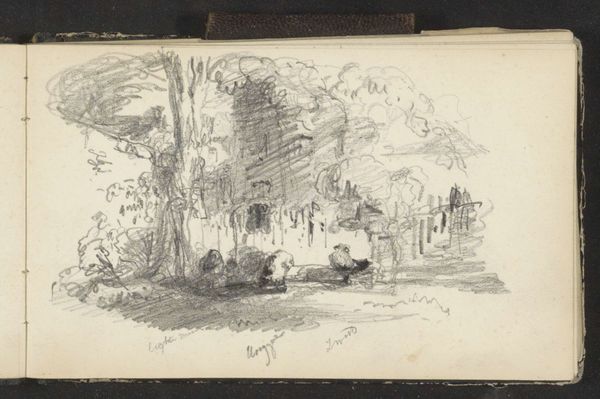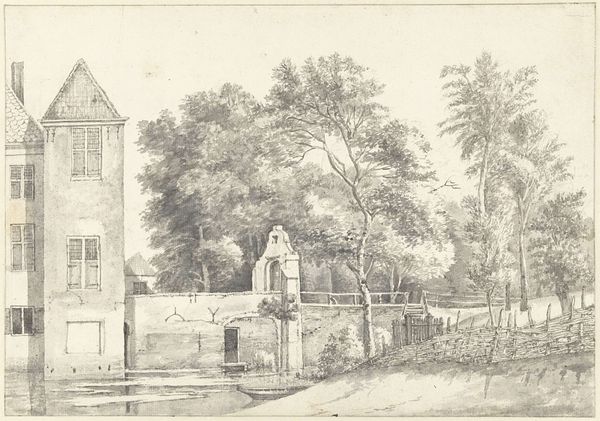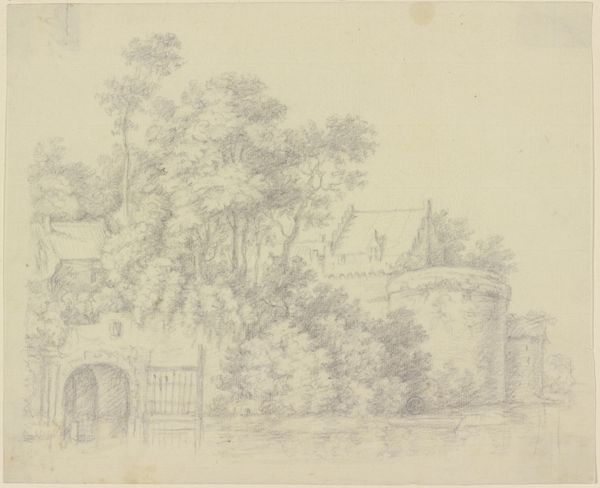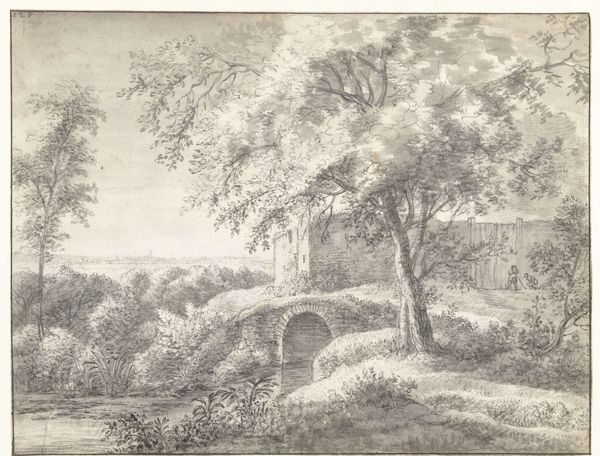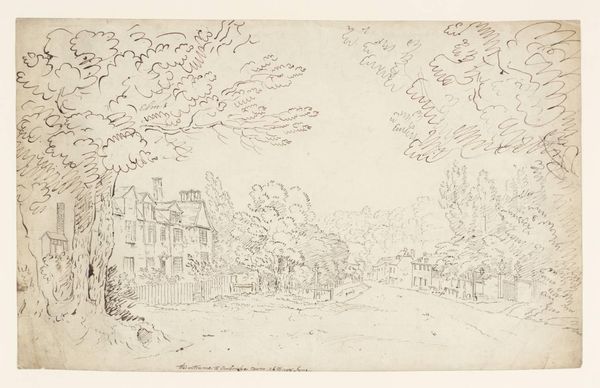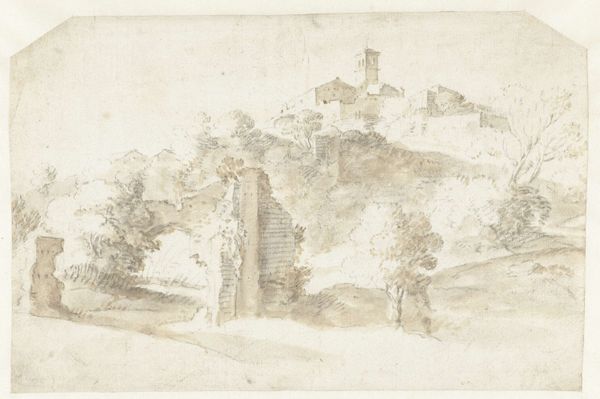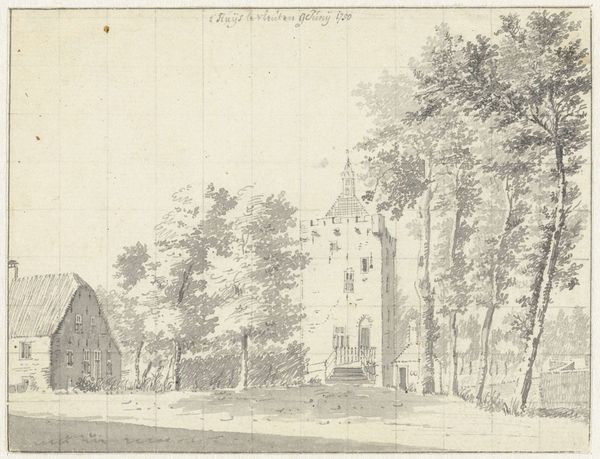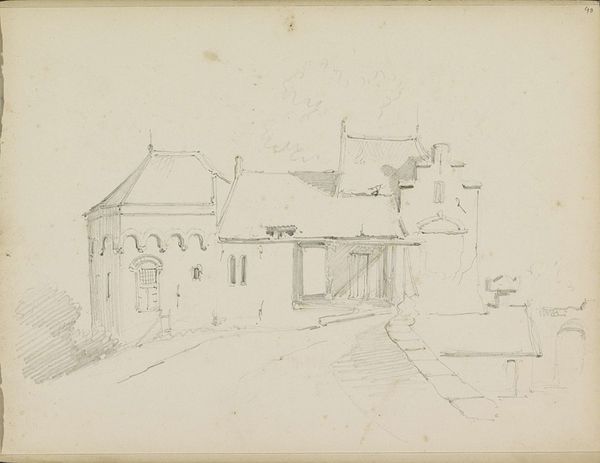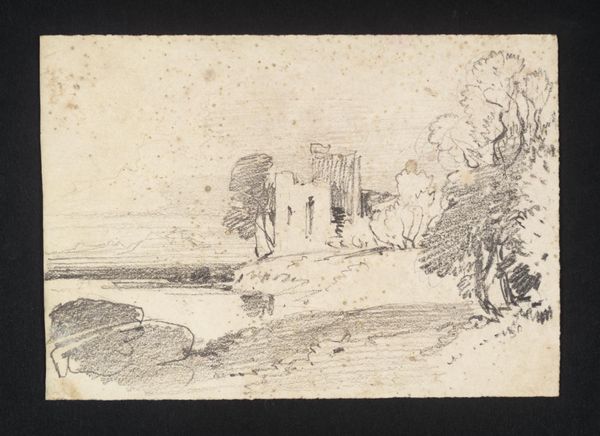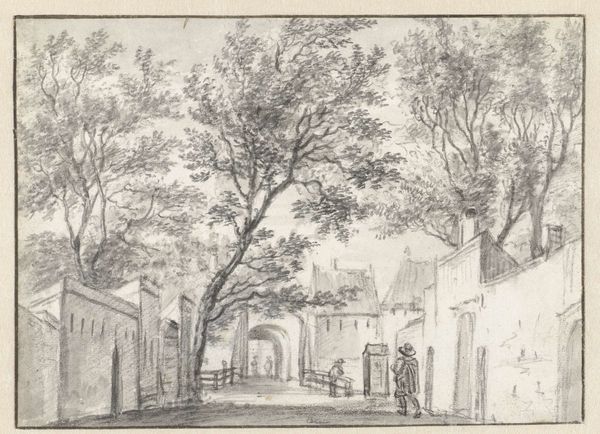
Dimensions: support: 66 x 121 mm
Copyright: CC-BY-NC-ND 4.0 DEED, Photo: Tate
Curator: This is Thomas Stothard's "A Ruined Abbey," a small pencil drawing held within the Tate Collections. Editor: Oh, it's all soft greys and melancholic light. It feels like a memory fading at the edges. Curator: Stothard, born in 1755, made quite a name for himself illustrating books; the picturesque aesthetic here was certainly in vogue. These kinds of ruins romanticized the past. Editor: I see the romance, but also the stark reality of time's passage, the slow, beautiful decay. There’s a quiet acceptance in those crumbling arches. Do you see the trees, how they’re almost embracing the stone? Curator: Indeed. The ruins became a signifier, almost a stage set, for reflections on mortality and the transient nature of human achievement. The aesthetic movement really embraced them! Editor: Exactly! And the scale is so intimate, a little world of contemplation held in the palm of your hand. It’s affecting. Curator: Well, I think Stothard gives us a glimpse into how art can evoke deeper feelings about history and time. Editor: It leaves me wondering what stories the stones could tell if they could talk.
